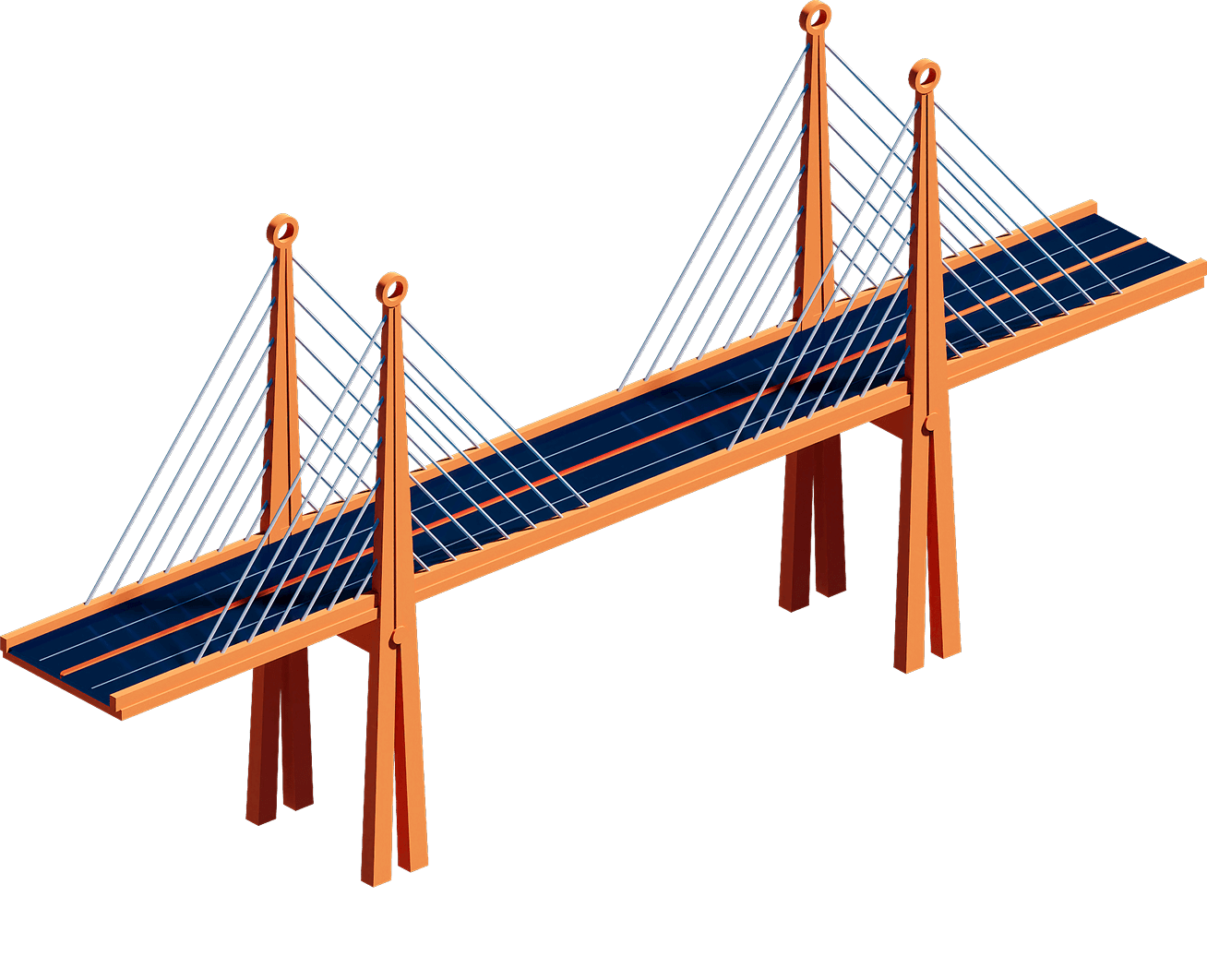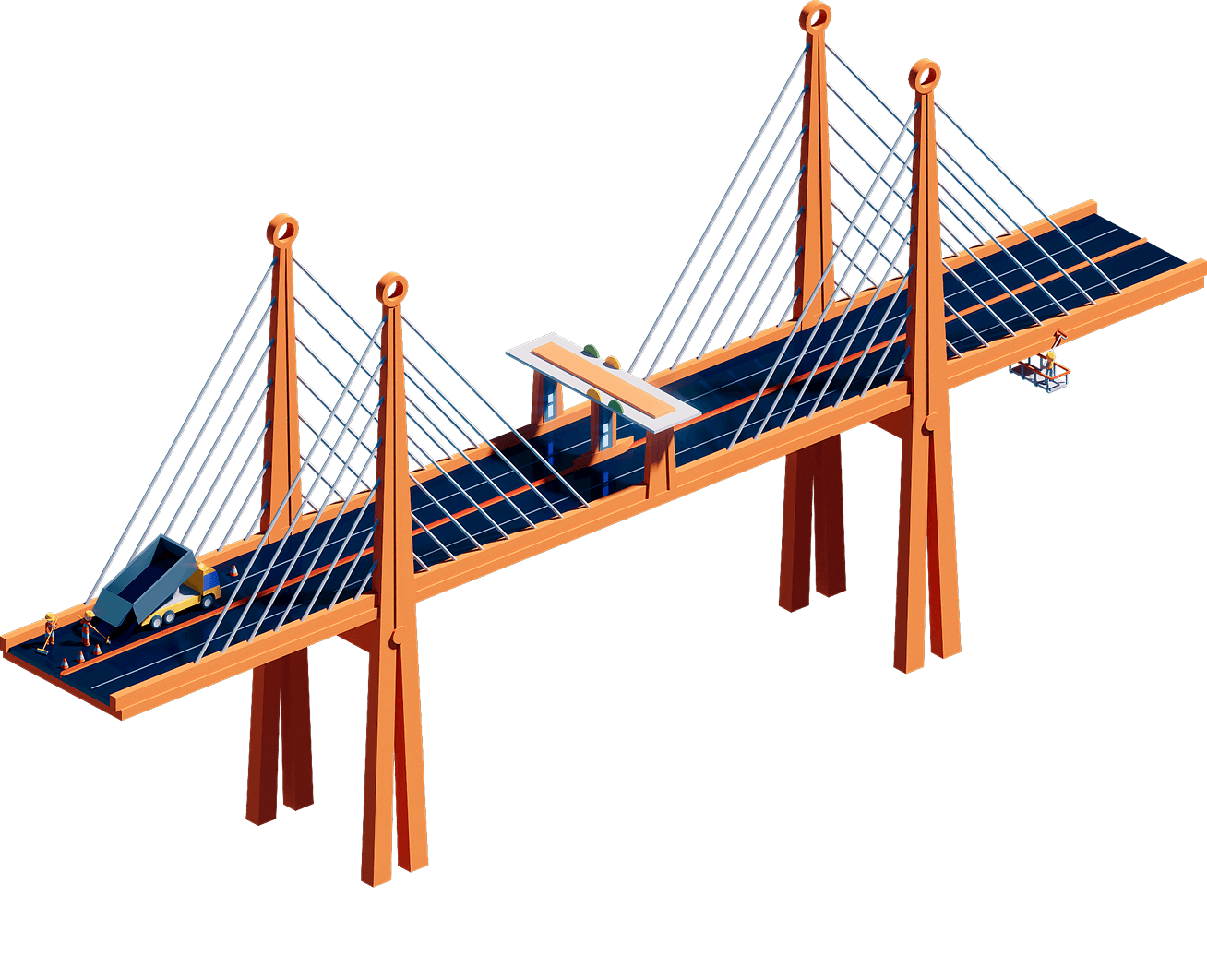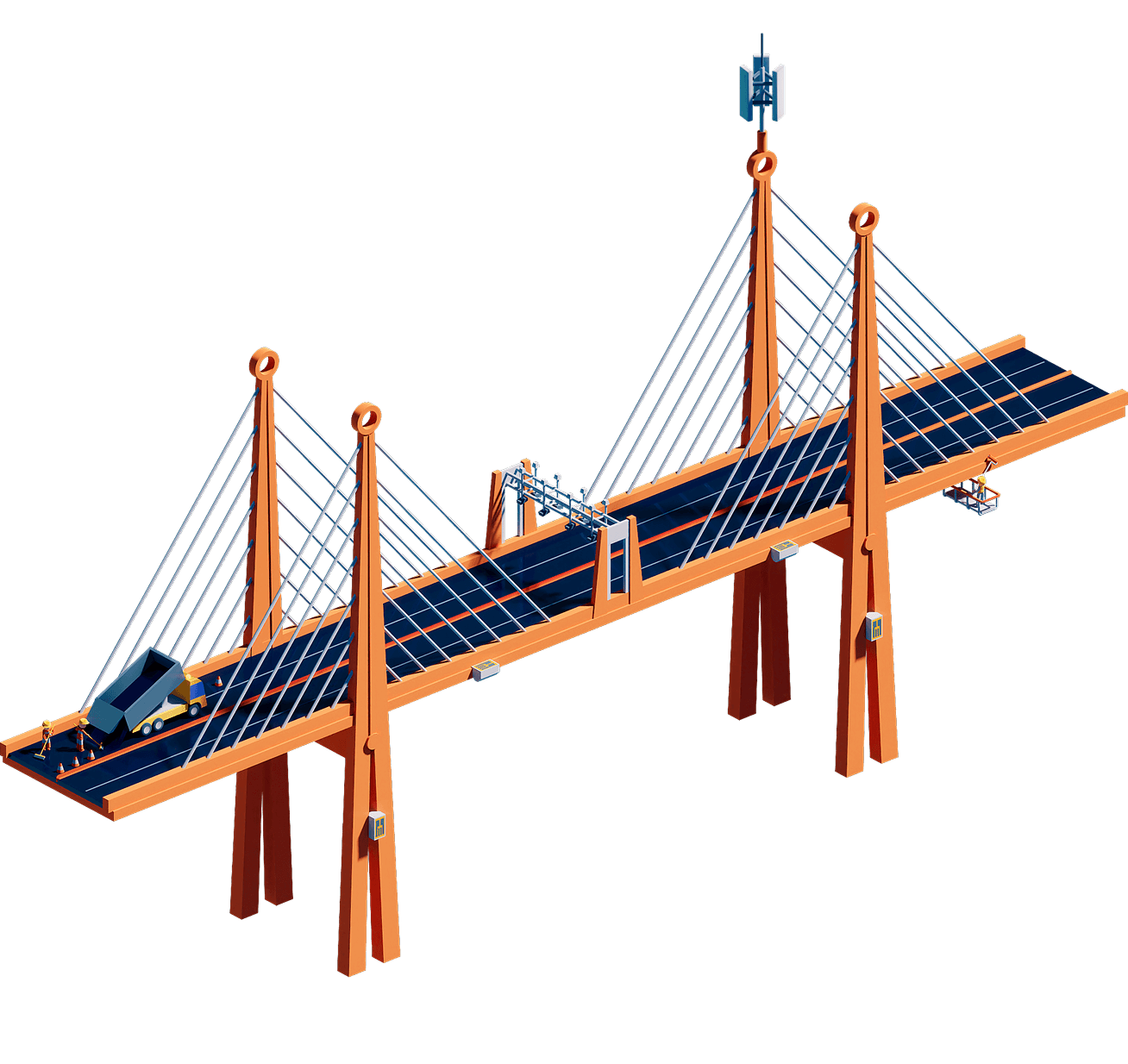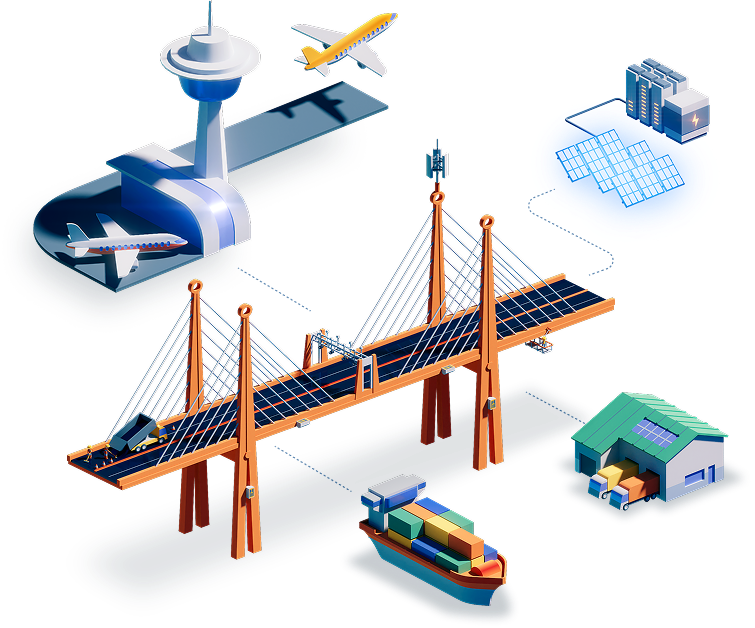Beyond the bridge: How the definition of infrastructure is expanding.
Illustrative example
Stage 1: Traditional infrastructure
Infrastructure begins with physical assets—durable, capital-intensive structures like bridges, roads, and tunnels, valued for their capacity and reliability.

McKinsey & Company

Prev

Next
Stage 2: Infrastructure with services
The definition expands to include operations and maintenance—toll collection, inspection, repair, and resurfacing—highlighting infrastructure as an ongoing service system, not just a one-time construction project.


Structural inspection and repair
Traditional toll booth


Painting/ resurfacing
Stage 3: Infrastructure with technology
With digital layers, infrastructure becomes “smart.” Sensors, automation, and connectivity enable predictive maintenance, dynamic tolling, and advanced mobility use cases such as autonomous vehicles. Infrastructure begins to generate data and intelligence.
5G towers

IoT strain gauges
Dynamic tolling and license-plate OCR


Stage 4: Infrastructure ecosystem
Finally, infrastructure is seen as part of an integrated ecosystem. The bridge links to renewable energy systems, electric vehicle charging, logistics hubs, ports, and airports. Infrastructure now underpins entire networks of energy, mobility, and commerce.
Power grid for EV charging stations
Airports
Warehouses



Shipping
